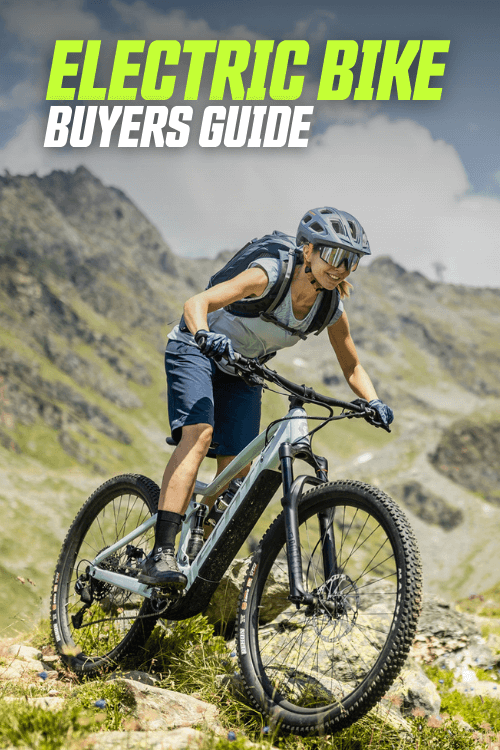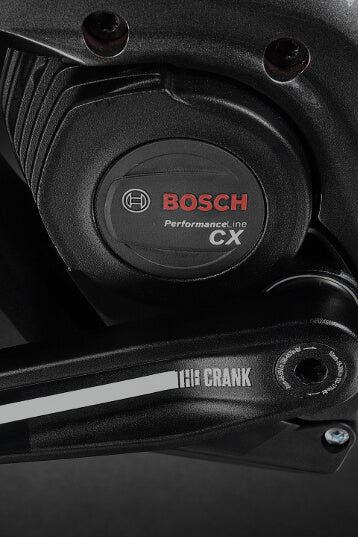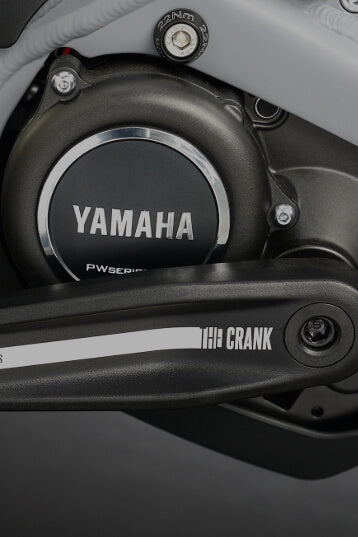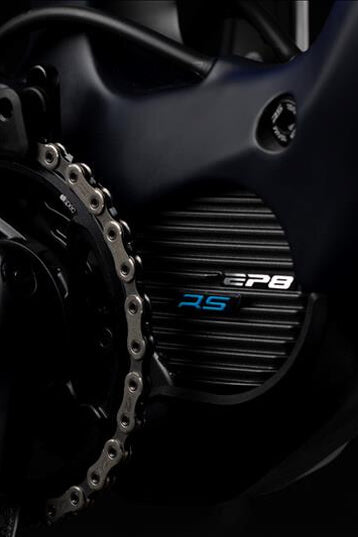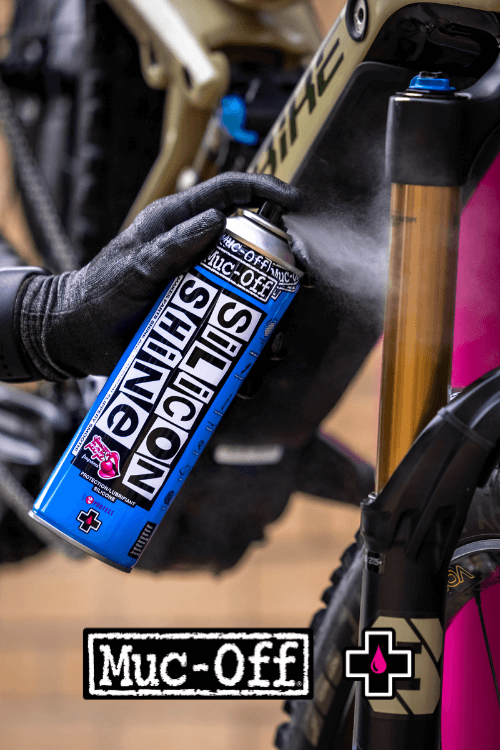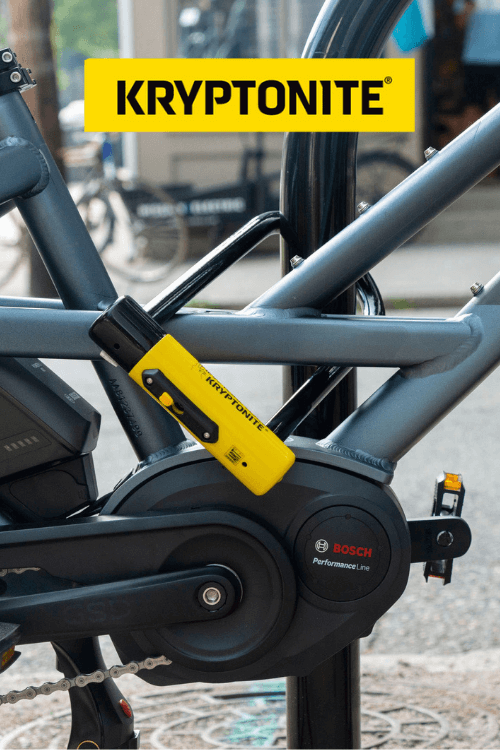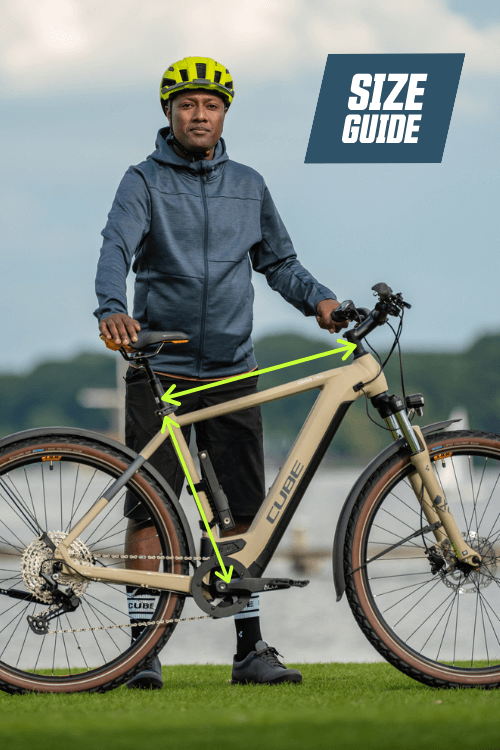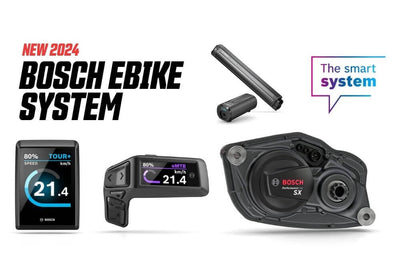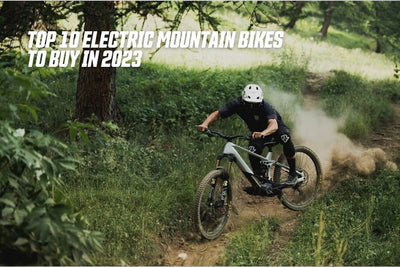
- TECH ARTICLES
Bosch vs Yamaha eBikes: What's the difference? Explained (Updated)
By Martin Brown |
On a daily basis I get calls asking what the differences between the Bosch & Yamaha electric bike systems are? What system is better you may ask? Well this is the full article that explains and compares each eBike system side by side. Bosch and Yamaha eBike systems work in a very similar way - They both operate using 250w crank drive electric bike motors. So let's see exactly what the differences are. We will start from the beginning.
*** This article has been updated in spring 2016 to accommodate the new revised Bosch & Yamaha systems for 2016 model years onwards ***
 Who are Bosch?
Who are Bosch?
Bosch are a very large multinational company that bring a whole manner of products to market. They began researching and developing eBike systems many years ago, they brought their first electric bike system to market in 2010. The Bosch system has been constantly developed and improved as time has gone on. The latest eBike system is the Bosch Performance line so this is the one we will directly compare today. The Bosch system is now used in over 50 leading bike brands across Europe.
 Who are Yamaha?
Who are Yamaha?
Yamaha was founded in 1955 and predominantly built motorcycles for the Japanese market. Today they make anything from eBike systems to Jet Skis with a wide product portfolio under their belt. It was back in 1993 when Yamaha released their first eBike system. This was a massive success. Yamaha now manufacturer over 300,000 electric bike systems a year and, to date, their system is implemented on over 2.7 million eBikes worldwide.In Europe the latest version of the Yamaha system is just used on both the Haibike sDuro range and the Lapierre Overvolt range of electric bikes.
Let's compare the components across both systems
Battery Comparison
Bosch and Yamaha both use 36v Lithium Ion 400Wh batteries. Built using the latest technology to give the maximum range and longevity. Notice how similar they are in shape, also they both incorporate a carry handle at the top.Both batteries have LED lights on board to show the user the remaining capacity. Also the batteries are frame mounted on the down tube. The Yamaha & Bosch batteries lock into place using a key mechanism for security.
 The difference in mounting is that the Bosch battery slots in from the top down, whereas the Yamaha battery slots in at the bottom first then pushes in from the side. One benefit to this is that the battery can be mounted in smaller frames as there is no need for that extra room at the top when mounting.Also the Bosch battery sits in its own little cradle attached to the frame approx 1 inch up from the motor whereas the Yamaha battery is placed directly into the top of the motor. The Yamaha battery also features a small shock absorber so the battery does not rattle over bumpy terrain. Battery specifications, comparison side by side -
The difference in mounting is that the Bosch battery slots in from the top down, whereas the Yamaha battery slots in at the bottom first then pushes in from the side. One benefit to this is that the battery can be mounted in smaller frames as there is no need for that extra room at the top when mounting.Also the Bosch battery sits in its own little cradle attached to the frame approx 1 inch up from the motor whereas the Yamaha battery is placed directly into the top of the motor. The Yamaha battery also features a small shock absorber so the battery does not rattle over bumpy terrain. Battery specifications, comparison side by side -
|
Bosch Battery |
Yamaha Battery |
|
|
Capacity |
400Wh / 11 Ah |
400Wh / 11Ah |
|
Voltage |
36 V |
36 V |
|
Security |
Key Lock |
Key Lock |
|
LED Status |
5 Lights (20%) |
4 Lights (25%) |
|
Weight |
2.6 kg |
2.9 kg |
|
Type |
Lithium Ion |
Lithium Ion |
|
Warranty |
2 yrs / 500 Full Cycles |
2 yrs / 700 Full Cycles |
|
Op Temp |
-5 to 40 degrees |
-20 to 60 degrees |
So as you can see from the specs, the Yamaha & Bosch batteries are very similar, the Yamaha is slightly larger in size than the Bosch, the Yamaha battery is also approx 300 grams heavier. The Bosch has 5 LED lights to show capacity in 20% stages whereas the Yamaha battery shows it with 4 LEDs in 25% increments. Battery range in average conditions, comparison side by side -
|
|
Bosch Battery |
Yamaha Battery |
|
Low |
80 miles / 130 km |
80 miles / 130 km |
|
Medium |
50 miles / 80 km |
53 miles / 85 km |
|
High |
37 miles / 60 km |
43 miles / 70 km |
|
Average |
57 miles / 90 km |
59 miles / 95 km |
As you can see the range predictions of each system are very close, the Yamaha system appears to offer a little more in the Medium / High area although this is marginal and they both average very similar. It's also worth pointing out that both Yamaha & Bosch batteries can be charged on or off the electric bike.Both Yamaha and Bosch offer a 2 year warranty on their electrics, Yamaha offer more 'Full' charge cycles than Bosch although remember that this is just the warranty, we expect the battery's overall lifespan to be a lot longer.
User Interface Comparison
The user interface and controls on each system are very similar in both size and operation. Both units have LCD backlit displays and use an additional button user control for the rider to navigate the settings without their hands leaving the handlebars. The Yamaha head unit is slightly taller than the Bosch display, it's also thinner in design, they both clamp on either side of the stem suitable for both 25.4mm & 31.8 handlebars. The control buttons are similar in size, and clamp on in similar ways.
 The actual LCD display area is slightly larger on the Yamaha system, each unit is easy to navigate and user friendly. The units are displayed in a clear, easy to read manner. Both head units can be removed from the bike, so when the bike is not in use or locked up somewhere the display can be removed and stored easily in your pocket, meaning no one can pinch it. Where the units do differ is that the Bosch system can be controlled on the head unit itself. You can navigate the settings, reset parameters, turn the lights on and of course power the system on/off. Control unit functions, comparison side by side -
The actual LCD display area is slightly larger on the Yamaha system, each unit is easy to navigate and user friendly. The units are displayed in a clear, easy to read manner. Both head units can be removed from the bike, so when the bike is not in use or locked up somewhere the display can be removed and stored easily in your pocket, meaning no one can pinch it. Where the units do differ is that the Bosch system can be controlled on the head unit itself. You can navigate the settings, reset parameters, turn the lights on and of course power the system on/off. Control unit functions, comparison side by side -
|
|
Bosch Controls |
Yamaha Controls |
|
LCD |
Yes |
Yes |
|
Backlit |
Yes |
Yes |
|
Display Buttons |
Yes |
No |
|
Control Buttons |
Yes |
Yes |
|
Clamp Size |
25.4 / 31.8mm |
25.4 / 31.8mm |
|
Removable |
Yes |
Yes |
|
Walk Function |
Yes |
Yes |
|
Light Function |
Yes |
Yes |
The remote buttons on the Bosch unit can navigate the information displayed, scroll up and down the assistance levels and also use the 'Walk Function'. The Bosch head unit can be turned on and scroll through the saved parameters when off the bike. The Yamaha display cannot be operated when off the bike, in fact it dims the screen and turns into a pocket watch when removed from the eBike. Obviously the display has no buttons on it so it can only be controlled via the remote buttons when it's connected to the bike. Both Yamaha and Bosch systems have a walk assist mode controlled by the remote buttons, so if the rider is walking beside the bike, the walk function can be used to push the bike along with little effort. Computer parameters, comparison side by side -
|
|
Bosch Parameters |
Yamaha Parameters |
|
Assist Levels |
4 |
4 |
|
Battery Bar |
5 Scale |
10 Scale |
|
Range in Miles |
Yes |
Yes |
|
Power Meter |
Yes |
Yes |
|
Cadence Meter |
No |
Yes |
|
Clock |
Yes |
Yes |
|
Thermometer |
No |
Yes |
|
Odometer |
Yes |
Yes |
|
Trip Distance |
Yes |
Yes |
|
Trip Time |
Yes |
Yes |
|
Maximum Speed |
Yes |
Yes |
|
Average Speed |
Yes |
Yes |
|
Gear Up Shift |
Yes |
No |
|
Language Adj |
Yes |
Yes |
|
Units |
MPH & KM/H |
MPH & KM/H |
Motor Comparison
Both Bosch and Yamaha use 250w crank drive motors, they are integrated into the bottom bracket area and drive on the crank which gives full use of the gears and a natural efficient feel for the rider. Bosch and Yamaha use high performance crank drive systems that optimise the use of 3 sensors - Cadence, Torque & Speed. These sensors are measured 1000's of times a second to create a very responsive, efficient & natural rider experience.
 You will notice both the Yamaha and Bosch motors are similar shapes. They are also similar sizes. In fact the Yamaha motor is slightly smaller than the Bosch. The Yamaha motor is also approximately 500 grams lighter than the Bosch. The Bosch motor is internally geared, so it features a small drive sprocket. This sprocket turns 2.5 times to each crank rotation. This enables a higher ground clearance but still offers standard gear ratios. It's also near impossible for the chain to come off. You will notice the Yamaha motor uses a regular size sprocket and the drive is not internally geared. Yamaha have created this system to be compatible with a double ring set up on the front so you can have a larger gear ratio between the 2 sprockets. The Bosch uses a ISIS crank fitment whereas the Yamaha drive uses a square taper crank fitting. Motor specifications, comparison side by side -
You will notice both the Yamaha and Bosch motors are similar shapes. They are also similar sizes. In fact the Yamaha motor is slightly smaller than the Bosch. The Yamaha motor is also approximately 500 grams lighter than the Bosch. The Bosch motor is internally geared, so it features a small drive sprocket. This sprocket turns 2.5 times to each crank rotation. This enables a higher ground clearance but still offers standard gear ratios. It's also near impossible for the chain to come off. You will notice the Yamaha motor uses a regular size sprocket and the drive is not internally geared. Yamaha have created this system to be compatible with a double ring set up on the front so you can have a larger gear ratio between the 2 sprockets. The Bosch uses a ISIS crank fitment whereas the Yamaha drive uses a square taper crank fitting. Motor specifications, comparison side by side -
|
|
Bosch Motor |
Yamaha Motor |
|
Rating |
250w |
250w |
|
Torque |
75Nm |
70Nm |
|
Max Assistance |
300% |
280% |
|
Drive Sprockets |
1 |
1 or 2 |
|
E.I Compatible |
No |
Yes |
|
Light Outputs |
Yes |
Yes |
|
Assisted Speed |
15.5 mph / 25 kph |
15.5 mph / 25 kph |
|
Weight |
3.8 kg |
3.5 kg |
Battery Charger Comparison
The battery chargers between Bosch and Yamaha are similar in that they have a low recharge time and are both mains operated 240v chargers.
 You will notice that the Yamaha charger is longer than the Bosch charger, Yamaha's overall size is a little bigger than Bosch's. The Yamaha charger is IPX4 water resistant.Both Bosch and Yamaha batteries can be charged when mounted in the bike or with the battery removed. When mounted on the bike the Bosch battery is charged through a charging port in the battery holder bracket. When the battery is removed it can also be charged directly by plugging the charger into the bottom of the battery.Whereas Yamaha's battery is charged through the same socket be it with the battery in or out of the frame.Battery charger specifications, comparison side by side -
You will notice that the Yamaha charger is longer than the Bosch charger, Yamaha's overall size is a little bigger than Bosch's. The Yamaha charger is IPX4 water resistant.Both Bosch and Yamaha batteries can be charged when mounted in the bike or with the battery removed. When mounted on the bike the Bosch battery is charged through a charging port in the battery holder bracket. When the battery is removed it can also be charged directly by plugging the charger into the bottom of the battery.Whereas Yamaha's battery is charged through the same socket be it with the battery in or out of the frame.Battery charger specifications, comparison side by side -
|
|
Bosch Charger |
Yamaha Charger |
|
Weight |
<800g |
800g |
|
Charge Time |
3.5 hrs |
3.5 hrs |
|
Input Voltage |
220-240v |
220-240v |
|
Input Amps |
1.5A |
1.3A |
|
Output Voltage |
32v |
42v |
|
Output Amps |
4A |
3.6A |
|
Frequency |
50/60Hz |
50/60Hz |
|
Air Vents |
No |
No |
|
Dimensions |
L190 W86 H54mm |
L184 W86 H50mm |
|
Charge Temp |
0 to 40 degrees |
0 to 45 degrees |
|
Mains Plug |
Yes |
Yes |
Battery and Motor Integration Compared
As previously mentioned the Bosch and Yamaha systems are mounted in very similar ways, the headunit and control buttons are mounted in identical positions. The motors are of course crank drive; so they are integrated into the bottom of the bike's frame where the bottom bracket would normally be.
 As you can see the Yamaha motor is a little smaller when integrated into the frame, although the Yamaha battery is longer than the Bosch battery pack. As you can also see, the Yamaha motor sits directly into the top of the motor casing whereas Bosch's battery sits in its own holder mounted to the frame above the motor.Both have plastic protective skid plates on the Haibike in particular (not on all manufacturers' eBikes). Notice on the model pictured the Yamaha has the larger chainring and it's a double whereas the Bosch uses the smaller single drive sprocket. Each system gives a similar & good ground clearance.
As you can see the Yamaha motor is a little smaller when integrated into the frame, although the Yamaha battery is longer than the Bosch battery pack. As you can also see, the Yamaha motor sits directly into the top of the motor casing whereas Bosch's battery sits in its own holder mounted to the frame above the motor.Both have plastic protective skid plates on the Haibike in particular (not on all manufacturers' eBikes). Notice on the model pictured the Yamaha has the larger chainring and it's a double whereas the Bosch uses the smaller single drive sprocket. Each system gives a similar & good ground clearance.
To sum up - What do we think?
The specs across each system are very similar, we've explained the exact differences in this article. Having used and ridden both systems there are certain features that we like on both.. Integration and look -
 We prefer the head unit integration on the Bosch system, it certainly feels firmer than the Yamaha head unit display bracket. The bracket and the cable routing are a lot tidier too. The Yamaha display is a little more flimsy in comparison and the side control buttons feel more 'plasticy'. Hard to explain but the Bosch kit just feels more 'German'. It appears and feels better quality; that said it is a slightly dearer system to purchase. Both systems look pretty good in the way they are integrated into the frames. The Yamaha system does seem a little smaller and more integral to the bike. It's nice that the battery inserts from the side too so that we can offer the system in smaller frames, something which hasn't always been possible with the Bosch system. Also we like the fact that the Yamaha has the small shock absorber at the bottom of the battery to soak up any bumps, although after extensively riding each system we don't feel this is an issue on either. Actual ride time - When it comes to riding the bikes, they are both very much on par with each other and definitely two of the best systems around. The Yamaha certainly feels a little more powerful in respect of torque, with the power coming in just a second or so earlier than the Bosch motor, although when both motors are up to a decent RPM they feel just as efficient as one another. We like the fact that the Yamaha system allows the use of 2 chainrings at the front. Although we don't feel it essential on a crank drive electric bike, some users do prefer to have a larger array of gears, particularly when using the bike off power. However we can see why Bosch have opted for the smaller single ring option to increase ground clearance and make it near impossible for the chain to come off. Both systems are very easy to use, ride and navigate through the various assistance levels & functions on board. We like the fact that Yamaha breaks down the remaining battery capacity into more increments, it gives the rider more of a sense of what is remaining. But both work well in comparison to other systems on the market. Although the Bosch display breaks down the assistance levels to 4 as opposed to 3 on the Yamaha, we didn't feel that this had too much effect in the actual riding. That said we were comparing the 2 systems off road, an extra level of adjustment on the Bosch display could possibly come in handy, for longer distance touring for example. Small factors worth mentioning -
We prefer the head unit integration on the Bosch system, it certainly feels firmer than the Yamaha head unit display bracket. The bracket and the cable routing are a lot tidier too. The Yamaha display is a little more flimsy in comparison and the side control buttons feel more 'plasticy'. Hard to explain but the Bosch kit just feels more 'German'. It appears and feels better quality; that said it is a slightly dearer system to purchase. Both systems look pretty good in the way they are integrated into the frames. The Yamaha system does seem a little smaller and more integral to the bike. It's nice that the battery inserts from the side too so that we can offer the system in smaller frames, something which hasn't always been possible with the Bosch system. Also we like the fact that the Yamaha has the small shock absorber at the bottom of the battery to soak up any bumps, although after extensively riding each system we don't feel this is an issue on either. Actual ride time - When it comes to riding the bikes, they are both very much on par with each other and definitely two of the best systems around. The Yamaha certainly feels a little more powerful in respect of torque, with the power coming in just a second or so earlier than the Bosch motor, although when both motors are up to a decent RPM they feel just as efficient as one another. We like the fact that the Yamaha system allows the use of 2 chainrings at the front. Although we don't feel it essential on a crank drive electric bike, some users do prefer to have a larger array of gears, particularly when using the bike off power. However we can see why Bosch have opted for the smaller single ring option to increase ground clearance and make it near impossible for the chain to come off. Both systems are very easy to use, ride and navigate through the various assistance levels & functions on board. We like the fact that Yamaha breaks down the remaining battery capacity into more increments, it gives the rider more of a sense of what is remaining. But both work well in comparison to other systems on the market. Although the Bosch display breaks down the assistance levels to 4 as opposed to 3 on the Yamaha, we didn't feel that this had too much effect in the actual riding. That said we were comparing the 2 systems off road, an extra level of adjustment on the Bosch display could possibly come in handy, for longer distance touring for example. Small factors worth mentioning -
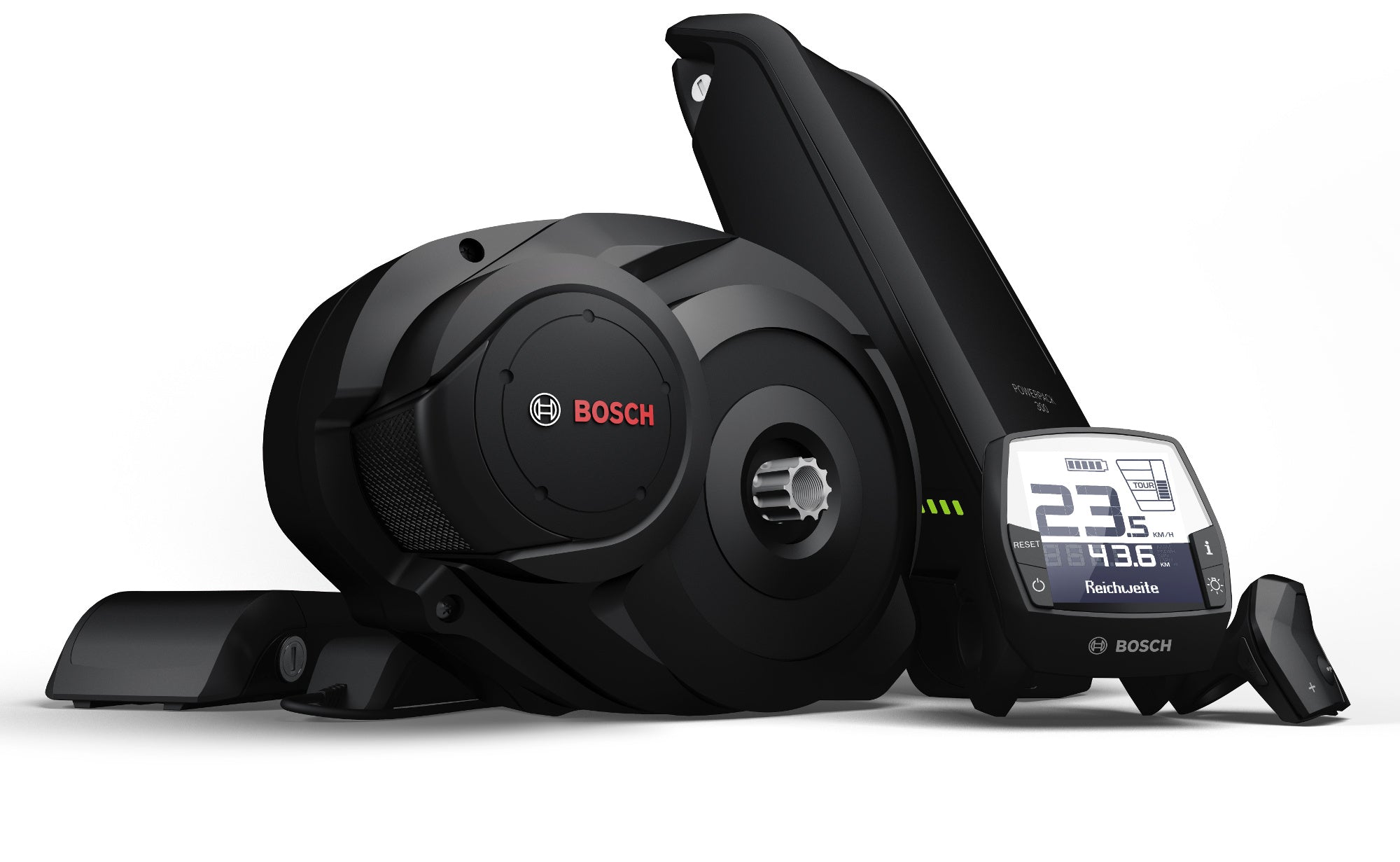
The ISIS crank axle is our preferred mounting method for the cranks to the motor axle. The Bosch motor uses the ISIS drive setup & the Yamaha the square taper type. We much prefer the size of the Bosch charger as it's smaller than the Yamaha and would be easier to carry around to extend any range. The Yamaha charger is just a fraction on the large size for our liking. Also the Bosch charger has little rubber feet on the bottom, which is such a small factor but it stops it sliding off the workbench as easily. Worth pointing out that the Bosch system can be updated by the dealer via the USB diagnostics socket. We like this because it means future updates are always possible and likely to bring new features. The Yamaha system is set out the factory and not updateable.
Bosch or Yamaha - Which is better?
Now that's a toughie, again there are certain features we like on each system, we would suggest, rather than buy a bike dependent on the drive system used, steer more towards thinking about the style and specification of the electric bike that you require. You may even end up with 2 very similar bikes one using Bosch & the other using Yamaha. At this point it's time to give us a call and book an appointment to physically ride both systems, also have a look for yourself at the quality and integration. You can then make the decision as to what suits your requirements better. You'll be impressed with both Yamaha & Bosch eBike systems, as are we!Click here to view our range of Bosch & Yamaha eBikes
 Riding the new Bosch & Yamaha eBike systems in Schweinfurt, Germany
Riding the new Bosch & Yamaha eBike systems in Schweinfurt, Germany

